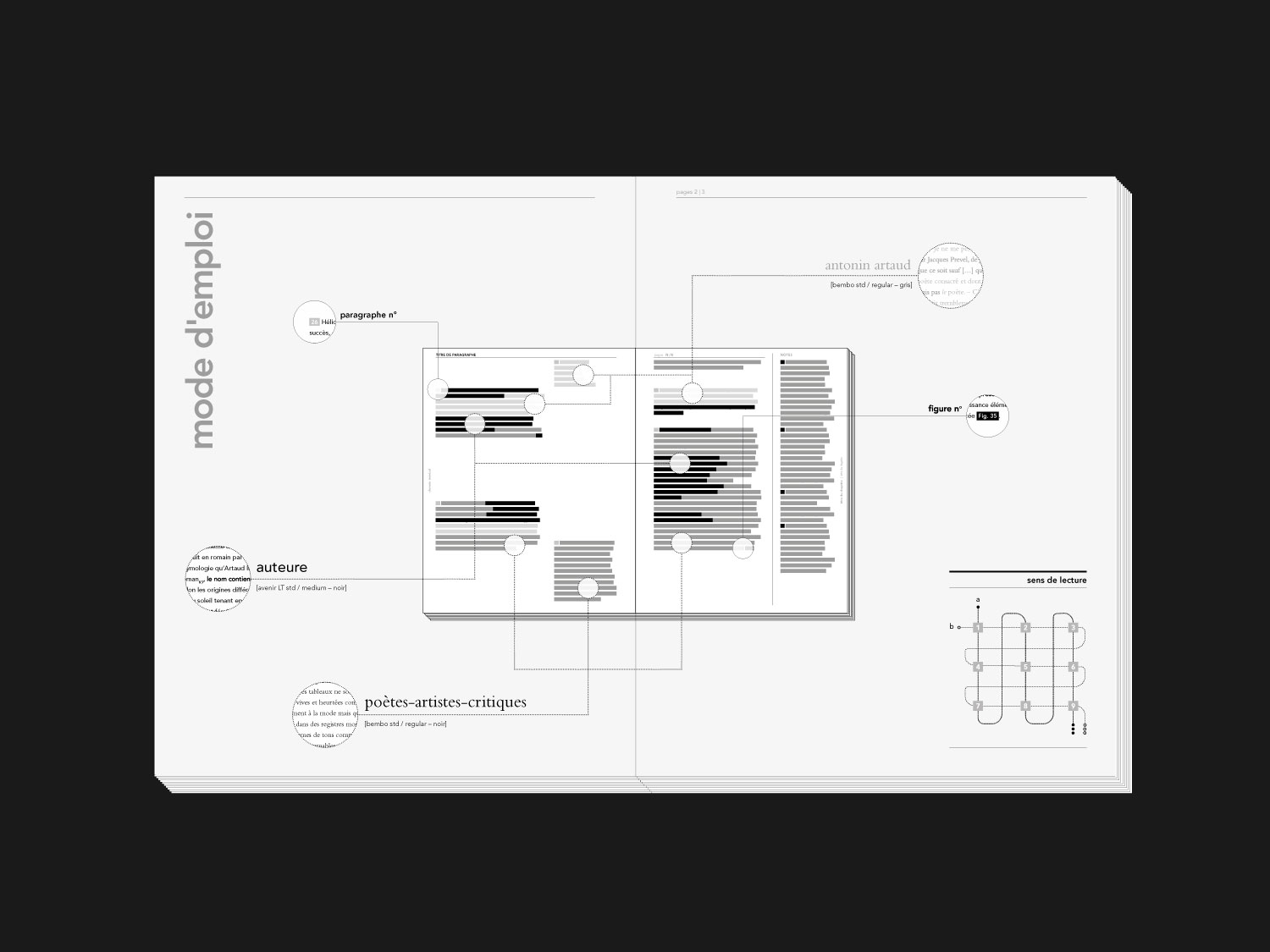what we ask for is to be able to celebrate the insubstantial, the void, the shadow, the dry grass, the stones of crumbling walls, and the dust that we breathe.
Gianni Celati
writing, book concept, creative direction giuliana prucca
graphic design, art direction
vito raimondi
proof-reading céline délavaux
printer SiZ, zevio, verona
publisher l’éditeur du dimanche
size 25 x 20 cm
soft-cover | glue-stitched
pages 492 | b/w
typeface avenir LT std | bembo std
papers stone paper 120 μ (dust jacket) | fedrigoni freelife cento black smooth 170 g/m2 (cover) | freelife oikos extra white smooth 80 g/m2
french
2023
with the support of
Centre National du Livre
PRESS KIT ︎︎︎
GIULIANA PRUCCA
Devenir minéral | L’éditeur du dimanche
Echoing Jean Dubuffet's idea that thought must arise from material in artistic practice, Giuliana Prucca, through this essay, reinterprets a moment in the history of 20th-century art using materials such as stone, sand, earth, and dust. She employs the mineral to illustrate that the creative act would be a trace of the body's disappearance. The loss of humanity and the deconstruction of the subject objectify themselves in the image. In other words, art resides in the tension between representation and its loss, ultimately leaving nothing but an image.
Drawing from the influential figure of Antonin Artaud, she weaves critical and poetic connections between the texts and works of various artists, writers, and thinkers, ranging from Jean Dubuffet to Jan Fabre and Anselm Kiefer, Yves Klein and Gutaï, Joë Bousquet to Camille Bryen and Francis Ponge, Gaston Bachelard to Gilles Deleuze, and Georges Bataille to Aby Warburg.
The material is not merely a thematic pretext; it is an active and explosive catapult that questions the arbitrary linearity of a conventionally assimilated art history. Following Ponge's example, Prucca applies the principles of poetry to criticism, starting from Artaud's material, the most undisciplined of poet-artist-thinkers of the modern era. This results in a critically inventive approach dangerously suited to its object, celebrating an anti-critique. The chosen writing materials, stonepaper for the cover and recycled paper for the pages, is consistent, intending to give the impression of being covered in dust.
The essay disrupts traditional reading habits and shatters the conservatism of art criticism by inhabiting writing space differently, presenting a physically engaging interaction. This is an essay in the literal sense, an experience where form never contradicts content, urging readers to take the risk of thinking deeply and embracing a new rhythm. A complex and challenging design invites them to choose different reading options, ultimately treating criticism as one would poetry.
© Céline Delavaux
Giuliana Prucca [Paris | Berlin] is an independent curator, researcher, and writer. She is the founder and art director of the publishing house AVARIE, specialising in contemporary art books that explore the relationships between text and image, body and space. Her approach, characterised by an authorial perspective, interdisciplinary interest, and a focus on content and materials, views books as dynamic spaces for research, creation, and experimentation, achieved through close collaboration with graphic designers. With a Ph.D. in French literature and visual studies, her contributions span critical articles, an essay on Antonin Artaud and Peter Downsbrough, and translations of artists' texts, including works by Antoine d’Agata, Yves Klein, and Gina Pane. As a teacher in publishing practices, she shares her expertise and curates exhibitions encompassing photography, experimental film, and performance at esteemed venues such as Les Rencontres de la Photographie in Arles, Fotoleggendo in Rome, The Others in Turin, in-between gallery in Paris, and Manifesta 12 off in Palermo. Since 2021, she has collaborated with Labor Neunzehn on the Kamera series in Berlin, presenting screenings and exhibitions of moving images in dialogue with artists' books.
avarie-publishing.com
Vito Raimondi is a graphic designer and art director with a focus on book design and layout. Following his training and early professional experiences in Italy, he lived between France and Germany, specialising in the design of art books, reports, and data visualisation. Based in Berlin since 2014, he has pursued his career as an independent designer, engaging in numerous collaborations within the fields of publishing and consultancy for international organisations.
vitoraimondi.com
L'éditeur du dimanche is an independent platform for reflection on photography and imagery initiated by Frédérique Destribats. Its objective is the dissemination of thoughtfully crafted editions in various visual or textual forms, conceived in close and long-term collaboration with artists. Among its recent publications are Nicole Gravier's 'Romans-Photos. Mythes & clichés', accompanied by an exhibition at Rencontres d'Arles in 2023 and featured during the last edition of Photo Saint Germain; Laurence Leblanc's 'Où subsiste encore' from 2022, and Pierre Liebaert's 'Libre maintenant / Free now' from 2021. With 'Devenir minéral', the publisher inaugurates a series, “Spéculations,” dedicated to critical writing on visual art, particularly exploring the relationship between image and text.
lediteur-du-dimanche.com

GIULIANA PRUCCA
DEVENIR MINÉRAL
38 euros
to purchase this book, please contact us or the publisher
destribatsf@gmail.com



